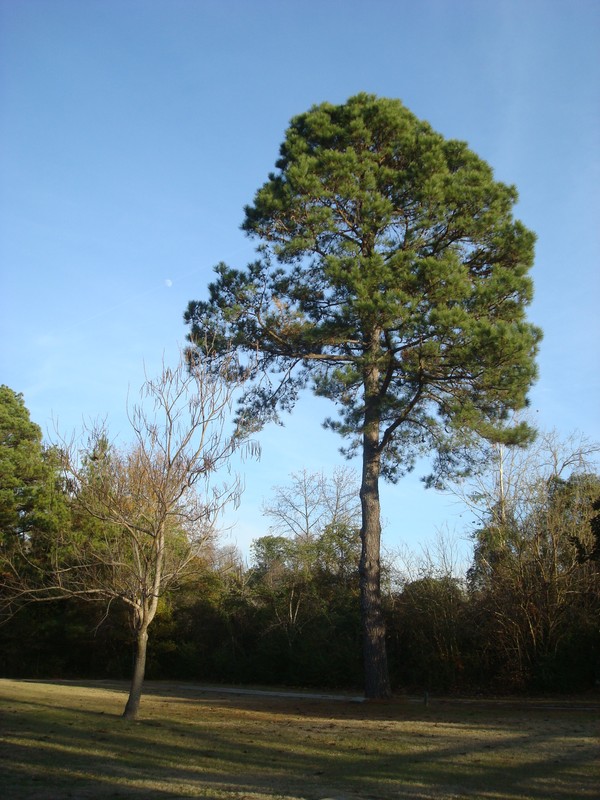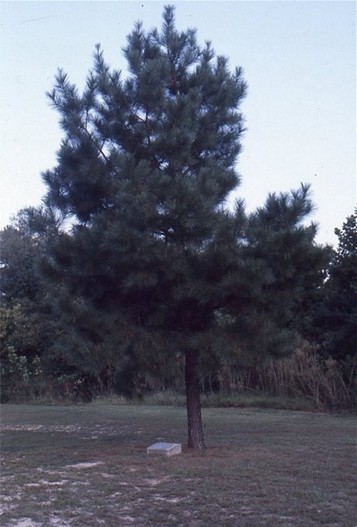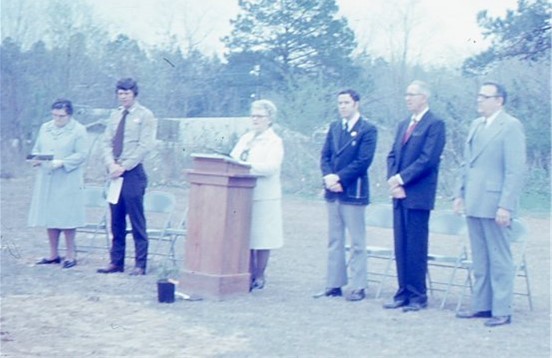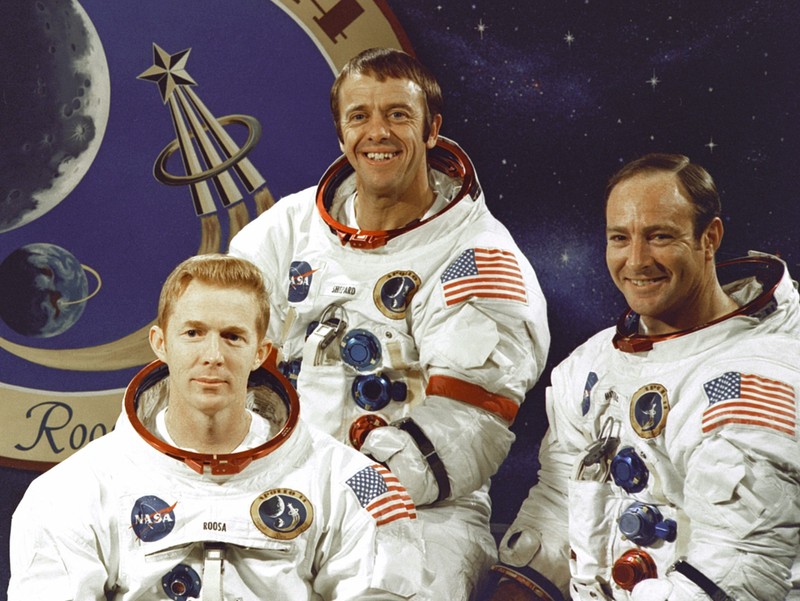Moon Tree (1976)
Introduction
Text-to-speech Audio
This loblolly pine tree orbited the moon aboard Apollo 14 as a seedling in 1971, and was planted next to the 1836 Courthouse in 1976. Part of an experiment to see how space travel effected plant life, it is one of eighty such "moon trees" still standing today, and one of two in the state of Arkansas.
Images
Moon Tree, 2015.

Moon Tree, c. 1980

Planting ceremony for the "Moon Tree," on March 15, 1976.

Crew of Apollo 14 from left to right: Command Module Pilot Stuart A. Roosa, Commander Alan B. Shepard, Jr., and Lunar Module Pilot Edgar D. Mitchell

Backstory and Context
Text-to-speech Audio
On January 31, 1971, Apollo 14 launched from Kennedy Space Center to be only the third mission to land on the moon, and the first since the Apollo 13 crisis. The Command Module was piloted in orbit by Stuart Roosa, a former U.S. Forestry Smokejumper, while Commander Alan Shepard, Jr., and Lunar Module Pilot Edgar Mitchell traveled to the moon’s surface. Roosa’s module carried a collection of about 500 seeds from five different species of tree in an experiment to see what effect space travel would have on plant life. After the seedlings showed no difference next to their Earth-bound counterparts, they were distributed to congressional and U.S. Forestry officials to be planted across the country. Arkansas received four, and only two remain: the one by the 1836 Courthouse, and another loblolly pine outside the Sebastian County Courthouse in Fort Smith. Both trees were planted on March 15, 1976. They are part of a group of around eighty "Moon Trees" still in existence today.
Besides the two trees, Apollo 14 had another Arkansas connection: Shepard, the first American in space and the only Mercury Seven astronaut to make a lunar landing, famously used a six-iron head attached to an excavation tool to hit two golf balls on the moon. The balls were made by a company owned by Rogers-based Daisy Air Rifles.
Sources
Brooke, Steven. Historic Washington, Arkansas. Gretna, Louisiana. Pelican Publishing Company, 2000.
Medearis, Mary. Washington, Arkansas : History on the Southwest Trail. Hope, Arkansas. Copies + Office Solutions, 1984.
Spears, Leita. Photo Essay: Branches in Time, Historic Washington State Park . July 7th 2020. Accessed April 16th 2022. https://www.arkansasstateparks.com/articles/photo-essay-branches-time.
Williams, Charlean Moss. The Old Town Speaks : Washington, Hempstead County, Arkansas, gateway to Texas, 1835, Confederate Capital, 1863. Houston, Texas. The Anson Jones Press, 1951.
Williams, Joshua. Washington. Images of America. Charleston, South Carolina. Arcadia Publishing, 2014.
Historic Washington State Park Collection
Historic Washington State Park Collection
Historic Washington State Park Collection
National Aeronautics and Space Administration (NASA)
